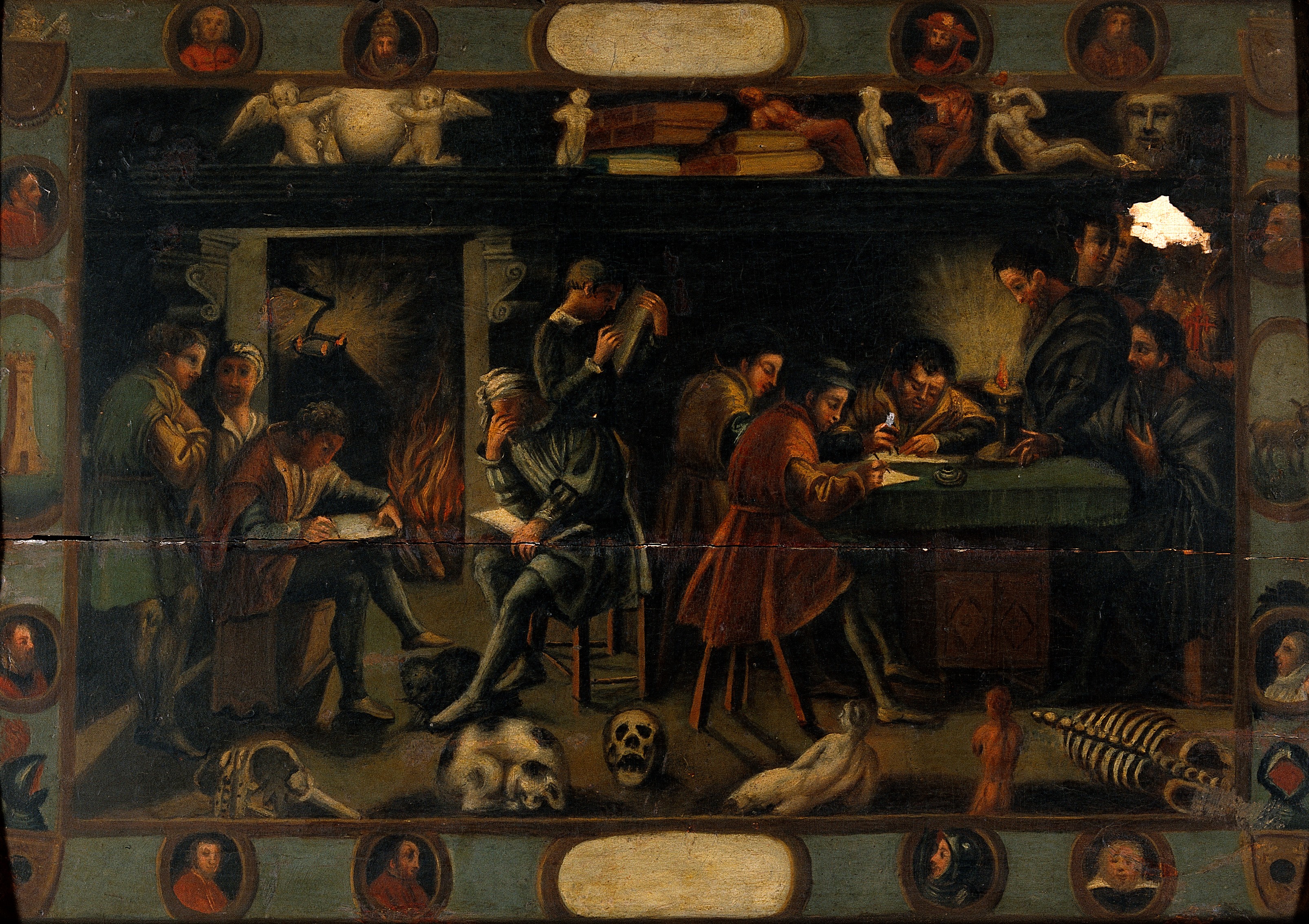
Before the ubiquitous reality television stars and digital influencers of today, before the Kardashians built their empire on shared screens and scrutinized lives, Hollywood society was ruled by another formidable trio of sisters: Magda, Zsa Zsa, and Eva Gabor. These Hungarian-American actresses and socialites, born amidst the chaos of World War I, burst onto the American scene in the 1940s and 50s with an unparalleled blend of European glamour, sharp wit, and an unapologetic embrace of their own celebrity. Their lives, often intertwined with scandal and high society, redefined what it meant to be famous, simply for being famously oneself.
Their story is one of dramatic escapes, relentless ambition, and a captivating ability to make their personal lives the talk of the town. From their formative years in Budapest, nurtured by an equally fascinating mother, Jolie, to their individual and collective rise to prominence in the United States, the Gabor sisters carved out a unique niche in the annals of Hollywood history. They captivated audiences and columnists alike, becoming the very embodiment of post-war aspiration and continental allure, leaving an indelible mark on culture, power, and the definition of glamour.
Today, we embark on an in-depth journey through the initial chapters of their extraordinary saga, exploring the foundational elements that shaped these iconic figures. We will peel back the layers of myth and anecdote to reveal the meticulous upbringing, the harrowing circumstances that brought them to American shores, and the early career strides that foreshadowed their eventual dominion over Tinseltown’s social circles. Prepare to be enchanted by the tale of how three remarkable women, guided by their mother’s unconventional wisdom, became symbols of an era.
1. **The Hungarian Roots and Family Dynamics**
The Gabor sisters—Magda, Zsa Zsa, and Eva—were born in Budapest, Hungary, into a family with a rich and complex background. Their father, Vilmos Gabor, was a Hungarian Jew who took the pragmatic step of changing his last name from Grün to Gabor, a move designed to facilitate social and financial advancement in a country increasingly shadowed by anti-Semitism. Their mother, Jolie Gabor, a self-described social climber, exerted a powerful and lasting influence over her daughters, instilling in them both ambition and a unique approach to navigating the world.
Jolie was notoriously determined to sculpt her daughters into extraordinary and successful women, fostering a competitive spirit among them, where even her affection was a prize to be earned, sometimes for a mere “two cents.” She was acutely aware of her daughters’ inherent beauty, a trait she ironically shared, as her own name meant ‘pretty’ in French. This awareness fueled her relentless drive to teach them the art of attracting wealthy men, a skill she believed was paramount for their future prosperity.
Under Jolie’s guidance, the girls received a multifaceted education, trained in ballet, tennis, riding, ice skating, and fencing – a curriculum tailored to the accomplishments of high society. However, academic learning was not their mother’s priority, as Jolie firmly believed such intellectual pursuits were secondary to a woman’s ultimate goal: securing a prosperous husband. Her oft-quoted mantra emphasized the importance of “poise, makeup, hair, jewelry, clothes and furs” as the true ingredients for ultimate success, outlining a pragmatic, albeit unconventional, roadmap for their lives.
Read more about: Beyond the Headlines: The Enduring Legacy of Andrew—From Ancient Apostle to Modern-Day Pop Culture Sparks
2. **Escaping War-Torn Europe**
The trajectory of the Gabor family was irrevocably altered by the grim realities of World War II. While Eva had already established herself in the United States by 1939 and Zsa Zsa by 1940, the specter of war descended upon Magda and her parents, Vilmos and Jolie, who remained in Budapest. The German invasion of Hungary in 1944 brought with it immediate danger, and despite having converted from Judaism to Catholicism in 1928, the family was arrested, highlighting the pervasive and indiscriminate nature of the anti-Semitic regime.
Magda, however, was no passive victim of circumstance. Several years prior to the German invasion, she had become deeply involved in the anti-Nazi underground, demonstrating a courage that would prove pivotal for her family’s survival. In 1941, she secured a position as secretary to Carlos Sampaio Garrido, the Portuguese ambassador to Hungary. While ostensibly a diplomatic role, it’s plausible that her work at the embassy served as a crucial cover for her clandestine anti-Nazi activities, intertwining her personal life with the high stakes of international espionage.
Her relationship with Ambassador Garrido evolved into a romantic one, and his extraordinary bravery proved to be their salvation. Carlos Sampaio Garrido, honored by Yad Vashem as one of the Righteous Among the Nations, leveraged his diplomatic status to issue protective passports and safe houses, ultimately saving Magda, Jolie, Vilmos, and nearly 1,000 other Jewish Hungarian citizens from persecution. This act of heroism ensured the Gabor family’s ability to eventually reunite in America, though their journey to freedom was not without further intrigue and delay. Magda herself became entangled in a minor scandal in Hungary surrounding her “friendship” with Carlos, with rumors of an affair and even an official engagement, though no official proof ever surfaced. Her eventual escape to America in mid-1946 was preceded by a reputed liaison with a Spanish nobleman, Jose Luis de Vilallonga, underscoring the dramatic and often scandalous path she forged.
3. **Eva’s Pioneering American Arrival and Hollywood Debut**
Eva Gabor, the youngest of the three sisters, was the trailblazer among them, being the first to immigrate to the United States. Her journey across the Atlantic began shortly after her first marriage in 1937, at the tender age of 18, to a Swedish osteopath named Dr. Eric Drimmer. This early arrival set her apart, allowing her to establish a foothold in American society and Hollywood well before her elder sisters and parents.
Upon her arrival, Eva quickly caught the attention of the film industry, signing a contract with Paramount Pictures. The studio, recognizing her potential, provided her with acting lessons, preparing her for a screen career. Her official leading-lady debut came in the 1941 film, *Forced Landing*. While the film itself was a “B movie” grade action flick, perhaps not particularly memorable in its own right, it served as a significant vehicle for Eva’s screen breakthrough, even if her acting in it was described as “particularly poor.” Nevertheless, it launched her into the public eye and even spawned two sequel movies.
Eva’s early career saw her appearing in a series of minor roles in various films, steadily building her resume and presence in Hollywood. These included notable productions such as *The Last Time I Saw Paris*, where she shared the screen with Elizabeth Taylor, and *Artists and Models*, starring the iconic duo Dean Martin and Jerry Lewis. Beyond her professional pursuits, Eva’s personal life in Hollywood also made headlines; in 1945, she met the acclaimed German director Ernst Lubitsch on the set of *Scandal* and embarked on a four-year affair, a relationship that garnered attention due to the significant 27-year age gap between them.

4. **Zsa Zsa’s Early Stardom and Tumultuous First Marriages**
Of the Gabor sisters, Zsa Zsa was destined for the most pervasive and enduring fame, her presence becoming synonymous with Hollywood glamour and wit. Her rise to stardom began not in America, but in her native Hungary, where her striking beauty and charisma were recognized early. In 1936, she was crowned Miss Hungary, a title that immediately thrust her into the spotlight and set the stage for her future career.
Following her beauty pageant success, Zsa Zsa made her foray into the performing arts, appearing on stage in an operetta titled “The Singing Dream” (Der Singende Traum) at the Theater an der Wien. It was here that she was discovered by the famous tenor of the time, Richard Tauber, a testament to her undeniable allure and talent. The operetta garnered widespread praise, further cementing her reputation as a burgeoning star before she even set foot on American soil.
Her personal life, however, was as dramatic and eventful as her public persona. Zsa Zsa’s first marriage was in 1937 to Burhan Asaf Belge, a leading Turkish intellectual and future member of the Turkish National Assembly. By the time the couple arrived in America in 1941, their marriage had deteriorated, leading Zsa Zsa to apply for divorce shortly after her arrival. Not long after, she met Conrad Hilton Sr., the founder of the illustrious Hilton hotel chain, and married him on April 10, 1946. This marriage, however, was far from idyllic. Zsa Zsa, 30 years Hilton’s junior, famously remarked, “I soon discovered that my marriage to Conrad meant the end of my freedom. My own needs were completely ignored: I belonged to Conrad.” She was reportedly kept on a strict budget throughout their union, and her mental health suffered significantly, culminating in a diagnosis of bipolar disorder. Tragically, she was even institutionalized against her will by Hilton in 1945, highlighting the tumultuous and often challenging start to her highly publicized marital journey.
5. **The Family Reunites: Becoming “Famous for Being Famous”**
The final piece of the Gabor puzzle fell into place with Magda’s arrival in the United States in 1946. Her presence completed the glamorous trio, and almost instantly, the sisters became an overnight sensation with the American public. They were, perhaps, the pioneering figures in a new kind of celebrity: famous simply for being famous. Their collective allure, accentuated by their distinctive European accents and their charming habit of addressing everyone as “darling,” cast a spell over high society and the nascent celebrity culture.
As Cindy Adams, to whom Jolie Gabor reportedly dictated her autobiography, once described their impact, the sisters were “blonder than anyone. They wore jewelry larger than anyone. They had these wonderful accents which they all but went to teachers to make sure they didn’t lose.” This effortless sophistication and exotic charm made them the epitome of European wealth and glamour, capturing the imagination of a post-war America eager for escapism and aspiration.
By the 1950s, the sisters were ubiquitous figures, their photographs gracing the covers of major magazines, their names peppered throughout gossip columns, and their every move meticulously dissected in tabloids. Zsa Zsa’s divorce from Conrad Hilton in 1947, in particular, was covered with feverish intensity by the media, further catapulting the sisters into the public eye and solidifying their status as celebrity icons. Their fame reached such a pinnacle that Oscar Hammerstein II, in his 1958 musical *Flower Drum Song*, famously rhymed “Zsa Zsa Gabor” with “nuclear war” when listing the absurdities of American life, a testament to their indelible imprint on the national consciousness.

6. **Eva Gabor: From TV Host to Sitcom Star**
While Magda had only briefly graced the silver screen in her native Hungary and Zsa Zsa was building her glamorous reputation, Eva Gabor was the sister who truly leveraged the burgeoning medium of television to propel the family name into the American mainstream. In 1953, recognizing her captivating screen presence and vivacious personality, Eva was given the opportunity to host her own television talk show, *The Eva Gabor Show*. This pioneering venture aimed to bring celebrity news and gossip directly to the nation, carving out a new space in the burgeoning television landscape.
However, *The Eva Gabor Show* was a more modest affair compared to the expansive chat vehicles that would later define television. With a mere 15 minutes a week on screen, Eva faced the challenge of interviewing a series of celebrity guests within a limited scope and format. Despite both Magda and Zsa Zsa making guest appearances to boost their collective profile, the show struggled to find its footing and was ultimately “canned” after just one season in 1954, an early but valuable lesson in the fickle nature of television programming.
Eva’s true breakthrough into mainstream American consciousness came in 1965 when she starred in the CBS sitcom *Green Acres*. Positioned as a “sister” show to the already successful *Petticoat Junction*, *Green Acres* proved to be an instant hit. The show ran for a remarkable six years and consistently enjoyed high ratings, firmly cementing Eva Gabor in the memory of the American public. Unfortunately, despite its popularity, *Green Acres*, along with other beloved rural-themed shows, fell victim to CBS’s infamous “rural purge” in 1971. The network, in a strategic shift, decided to refocus American television towards urban settings, leading to the abrupt cancellation of shows like *Green Acres*, regardless of their performance, a decision that impacted not just Eva but the entire cast.
7. **Eva Gabor: The Voice Behind the Cartoons and Later Roles**
Beyond her live-action roles and captivating television presence, Eva Gabor extended her artistic reach into the magical world of animation, becoming the voice behind some of Disney’s most cherished characters. Her distinctive, elegant voice brought a unique charm and sophistication to these animated roles, making her an integral part of many people’s childhoods, often without them even realizing the famous personality behind the voice. She flawlessly embodied the part of The Duchess in the classic 1970 Disney film, *The Aristocats*, adding layers of grace and maternal warmth to the animated feline matriarch.
Her vocal talents were so revered that she was cast in another iconic Disney role: the sophisticated and courageous Miss Bianca in *The Rescuers*. This beloved character, a charming mouse detective, captivated audiences in the 1977 original film and again in its 1990 sequel, *The Rescuers Down Under*. Through these roles, Eva Gabor cemented her legacy not just as a glamorous actress, but also as an integral part of animated cinema history, enchanting generations with her voice work.
Even as her animated career soared, Eva continued to grace the small screen in various live-action sitcoms throughout the 1980s. She made memorable guest appearances on popular shows like *The Love Boat*, *Fantasy Island*, and *Hart to Hart*, further diversifying her already impressive acting portfolio. *The Rescuers Down Under* was, poignantly, one of her very last film roles, marking the conclusion of a versatile and enduring career before her passing in 1995, leaving behind a rich tapestry of performances in both live-action and animation.
8. **Eva Gabor’s Expanding Marital Landscape**
Eva Gabor, the trailblazing youngest sister, navigated a personal life as eventful as her burgeoning career, with a series of marriages that underscored her desires and evolving ambitions. Following the dissolution of her first marriage to Eric Valdemar Drimmer in 1942, a separation she attributed to her husband’s objection to having children, Eva swiftly remarried in 1943 to Charles Isaacs, an investment broker. This union, however, also proved ephemeral, concluding in divorce by 1949, hinting at a restlessness or an unfulfilled quest for a stable, family-oriented life.
Her marital journey continued in 1956 with Dr. John Elbert Williams, a practicing plastic surgeon. This particular marriage was remarkably brief, lasting less than a year, perhaps suggesting a search for compatibility that remained elusive. It was in 1959 that Eva found a more enduring partnership with Richard Brown, a textile manufacturer. Their marriage, spanning from 1959 to 1973, offered a period of relative stability, a substantial departure from her prior shorter unions, allowing her to establish a deeper connection and shared life.
Eva’s final walk down the aisle took place in 1973, when she wed Frank Gard Jameson Sr., a vice president of Rockwell International. This marriage not only brought her a new partner but also introduced her to the role of a stepmother to his children, fulfilling a familial aspect that had previously been a point of contention in her early relationships. Although they eventually parted ways in 1983, this union represented the longest of her five marriages, marking the culmination of a diverse and publicly scrutinized quest for companionship, all while she excelled in her professional endeavors.
Read more about: The Ultimate ‘I Do’ Crew: 14 Celebrities Who Proved Love is Worth Every Walk Down the Aisle!
9. **Magda Gabor’s Quieter Path and Complex Unions**
Magda Gabor, the eldest sister, often maintained a more understated public profile compared to her vivacious younger siblings, yet her personal life was equally rich with romantic entanglements and societal intrigue. After her earlier marriages in Hungary and the short-lived union with William M. Rankin upon her arrival in America, Magda entered into a marriage with Sidney Robert Warren, a practicing attorney, in New York in 1949, a partnership that, like many of her sisters’, concluded in divorce merely a year later in 1950.
Her fourth marriage, however, proved to be a more substantial and lasting commitment. She tied the knot with Arthur “Tony” Gallucci, the president of Samuel Gallucci and Son, one of America’s oldest contracting companies. Their relationship was evidently a strong match, as it endured until his passing from cancer in 1967. This period offered Magda a measure of stability and deep personal connection, standing out amidst the often-fleeting romantic adventures of the Gabor women.
Following a period of mourning, Magda’s marital history took a fascinating, almost soap-operatic turn. In 1970, she married British actor George Sanders, a man who had previously been married to her sister, Zsa Zsa. This familial crossover in romance caused considerable stir, and their union was controversially annulled a mere month later, reputedly due to intense “family pressure.” It was an event that added another layer of intrigue to the already storied Gabor family saga, showcasing the intense, often intertwined nature of their personal lives.
Her sixth and final marriage came in 1972 to Tibor Heltai, a real-estate broker. This marriage lasted for three years, ending in divorce in 1975, after which Magda chose to remain unmarried. In her later years, after suffering a massive stroke that left her unable to speak for nearly 30 years, Magda transformed her life, becoming a well-known Palm Springs hostess, demonstrating a remarkable resilience and adaptability, cementing her unique legacy away from the more dramatic public spotlight of her sisters.

10. **Zsa Zsa Gabor: A Marital Odyssey of Glamour and Wry Observations (Part 1)**
Zsa Zsa Gabor’s name became synonymous with Hollywood glamour, sharp wit, and an astonishing series of marriages, each chapter adding to her legend. Her early unions with Burhan Asaf Belge and Conrad Hilton Sr. had already set a precedent for high-profile relationships. Following her divorce from Hilton in 1947, she married the distinguished English film and television actor George Sanders in 1949. Their partnership, an elegant pairing of two prominent personalities, saw them appear together in the 1956 film *Death of a Scoundrel*, a year after their own divorce, highlighting the intertwined nature of their professional and personal lives.
Sanders, who would later marry Zsa Zsa’s sister Magda, met a tragic end, committing suicide in 1972, an event that once again drew the Gabor name into a spotlight of somber reflection. Zsa Zsa, with her characteristic blend of self-awareness and humor, moved on to her fifth husband, Herbert Hutner, a banker, attorney, and philanthropist, whom she married in 1962. Their marriage concluded in 1966, with Zsa Zsa famously quipping that he was “too good” to her, and she almost lost her drive because of it, a testament to her fiercely independent and ambitious spirit.
Her witty remarks about her matrimonial adventures were legendary, as she once famously stated, “I am a marvelous housekeeper: Every time I leave a man I keep his house.” This sentiment encapsulated her pragmatic yet glamorous approach to life and relationships. Her subsequent marriages included Joshua S. Cosden in 1966, which lasted barely a year, and then Jack Ryan in 1975. Ryan, remarkably, was known as the inventor of Mattel’s Barbie doll, a fascinating connection given Zsa Zsa’s own iconic status as a symbol of glamorous femininity, leading many to speculate that she might even have inspired the doll’s creation. Their marriage too was short-lived, ending in 1976.
11. **Zsa Zsa Gabor: The Whirlwind of Love and the Infamous Annulment (Part 2)**
Zsa Zsa Gabor’s marital saga continued to captivate the public, each relationship a testament to her relentless pursuit of love and companionship, often culminating in headline-grabbing separations. Following her marriage to Jack Ryan, she embarked on a union with Michael O’Hara, which, by her standards, proved to be a rather substantial six-year partnership before their divorce in 1983. However, it was her next marital endeavor that would become one of the most talked-about episodes of her romantic life, even if it was one of the shortest.
In a turn of events that perfectly underscored the dramatic flair of Zsa Zsa’s life, she married Mexican attorney Felipe de Alba on April 13, 1983. This particular wedlock was incredibly fleeting, dissolved by annulment a mere day later, on April 14, 1983. The reason for this astonishingly brief union was rooted in administrative oversight: the paperwork to finalize her divorce from Michael O’Hara had not been processed correctly, rendering her marriage to Felipe de Alba legally invalid.
This incident, though a legal mishap, was a public relations spectacle, further cementing Zsa Zsa’s image as a woman whose life was a continuous, flamboyant narrative. The rapid annulment added another layer of intrigue and, predictably, humor to her already extensive marital record. The episode, while perhaps an embarrassment at the time, only served to amplify her legendary status as a socialite whose personal life was perpetually in the public eye, constantly providing fodder for gossip columns and public fascination. The situation was likely a fortunate outcome for Felipe de Alba, given the couple’s subsequent breakup and his move to New York City.
12. **Zsa Zsa’s Enduring Union and Francesca Hilton’s Poignant Fate**
After a string of rapid-fire marriages, Zsa Zsa Gabor finally found a lasting partnership with her ninth husband, the German-American entrepreneur Frederic Prinz von Anhalt. Their wedding in 1986 marked the beginning of a remarkably enduring union that lasted until Zsa Zsa’s passing in 2016. Frederic, known for having purchased his “von Anhalt” title by being formally adopted by Princess Marie-Auguste of Anhalt, brought a unique dynamic to their relationship, and his subsequent adoption of ten male heirs, each for a fee, only added to the eccentric allure surrounding Zsa Zsa’s final chapter.
Despite her nine marriages, Zsa Zsa Gabor had only one child: Constance Francesca Hilton, born to her second husband, Conrad Hilton. In her autobiography, Zsa Zsa controversially claimed Francesca was conceived when she was taken advantage of by Hilton, a narrative that undoubtedly colored their complex mother-daughter relationship. Zsa Zsa and Conrad divorced before Francesca’s birth, and though Francesca spent holidays with her father and enjoyed occasional upscale lunches, their bond was far from close. Upon his death in 1979, Conrad Hilton famously left Francesca a mere $100,000 out of his vast $200 million estate, with the majority benefiting his charity, underscoring the distance in their relationship.
Francesca’s life was a poignant struggle to find her own footing outside the shadow of her famous parents. She stopped receiving financial support from her wealthy family decades prior and tried various avenues to make ends meet, from acting in films like *A Safe Place* (1971) and *The Gravy Train* (1974) to working as a photographer in the 1980s. Later, she even ventured into stand-up comedy, becoming a regular performer at The Comedy Store in West Hollywood, demonstrating her resilience and desire for independence, even as she watched her mother marry six more times before settling with Frederic Prinz von Anhalt.
Tragically, Francesca passed away on January 5, 2015, at the age of 67, at Cedars-Sinai Medical Center in Los Angeles, following a major stroke or heart attack. In a heartbreaking twist, Zsa Zsa, who was 98 and suffering from dementia at the time, was reportedly never informed of her daughter’s death. This poignant detail encapsulates the complex and often bittersweet nature of the Gabor family’s highly public yet deeply personal lives, with Zsa Zsa following her daughter in death just the following year, concluding a truly unique familial saga.

13. **The Sisters’ Encounters with Scandal and Unconventional Lives**
The Gabor sisters were undeniably masters of capturing public attention, and their lives were often punctuated by headline-grabbing scandals and unconventional personal choices that further cemented their iconic status. Beyond their numerous marriages and divorces, which were constant fodder for the tabloids, the sisters ventured into more controversial territory that fueled speculation and gossip throughout their careers, proving they were no strangers to unwanted attention.
Zsa Zsa, in particular, was at the center of several high-profile affairs that titillated society. It was widely speculated that President John F. Kennedy, known for his affinity for blondes, had a relationship with her. Zsa Zsa herself, however, offered a nuanced account, stating, “He took her out for three months, but I never slept with him. He slept with everybody. He took me out because he liked to be with me.” More conclusively, she did engage in an affair with her stepson, Conrad “Nicky” Hilton Jr., in 1944, a scandalous revelation that intertwined the family’s romantic history even further, especially as Nicky Hilton Jr. would later become Elizabeth Taylor’s first husband.
Eva Gabor, though generally perceived as the most prim of the trio, was not immune to whispers of scandal. According to Zsa Zsa’s only daughter, Francesca, Eva was bisexual and reportedly had an affair with the legendary actress Marlene Dietrich. In an era far less accepting of diverse sexual orientations, such a revelation, had it been widely publicized during Eva’s lifetime, would have caused an immense societal upheaval, highlighting the private complexities beneath her glamorous public persona.
Perhaps the most infamous of Zsa Zsa’s personal controversies occurred in June 1989, when she was pulled over for an outdated registration. The incident quickly escalated, culminating in Zsa Zsa slapping the police officer across the face. She was subsequently charged with five offenses, including battery upon a police officer and having an open container of alcohol in her car. The highly publicized trial resulted in her being sentenced to three days in jail and 120 hours of community service, an event that became a defining moment in her later career, proving that even a brush with the law could be transformed into a memorable, if not entirely flattering, spectacle.
Read more about: Why 1994 Was Arguably the Greatest Year in Cinema History: A Deep Dive into its Unforgettable Films

14. **A Glamorous Legacy: The Gabor Sisters’ Enduring Imprint on Celebrity Culture**
The Gabor sisters—Magda, Zsa Zsa, and Eva—created an indelible mark on Hollywood and the broader cultural landscape, pioneering a new form of celebrity where being “famous for being famous” became an art form. Their distinctive European glamour, accentuated by their “blonder than anyone” hair, “larger than anyone” jewelry, and charming accents, captivated a post-war America eager for aspiration and escapism. They were ubiquitous figures, gracing magazine covers and dominating gossip columns, their every move meticulously chronicled and endlessly discussed, setting the stage for future generations of socialites.
Their enduring socialite lifestyle was a spectacle of lavishness and personal panache. Iconic photographs captured Zsa Zsa in her signature laid-back pose, whether in 1953 or decades later poolside at her Bel Air Mansion, exuding effortless stunningness. Their love for exquisite possessions was evident in Zsa Zsa’s impressive collection of customized automobiles, including a personalized Rolls Royce Silver Cloud II tailored by George Barris and a luxurious Mercedes-Benz 300SL Gullwing gifted by Porfirio Rubirosa, which has since become a million-dollar investment. Beyond material wealth, Zsa Zsa’s deep affection for her poodles and Shih Tzus, for whom she threw parties, revealed a tender side to her flamboyant persona.
Even their beauty regimens were part of their legend. Zsa Zsa was known for religiously cooking a goulash recipe that included ginger snaps, which she claimed contributed to her healthy, glowing skin, alongside eating a single piece of green pepper daily for youthfulness—secrets that, perhaps, contributed to her longevity, as she lived to be 99 years old. These details, meticulously shared and often embellished, cemented their image as glamorous figures living lives of unparalleled luxury and distinct quirks.
As the decades passed, the Gabor sisters’ lives began to close, marked by a poignant series of departures. Eva, the youngest, was the first to pass away on July 4, 1995, due to complications from a fall. Their mother, Jolie, died less than two years later in April 1997, reportedly never having been told of Eva’s death. Magda followed just two months after Jolie, in June 1997. Finally, Zsa Zsa, the most famous of the trio, passed away on December 18, 2016, at the age of 99, after years of illness, just shy of her 100th birthday, which she had planned to celebrate by moving back to Hungary.
The Gabor sisters, collectively and individually, redefined celebrity, proving that personality and charisma could be as potent as talent in capturing public imagination. Their legacy continues to resonate, even with contemporary figures like Paris Hilton, great-granddaughter of Conrad Hilton Sr., who acknowledged Zsa Zsa’s passing, drawing a clear line from the old-world glamour of the Gabors to the modern era of reality socialites. They navigated their lives with an unapologetic embrace of who they were, leaving an indelible mark on culture, power, and the very definition of glamour, forever shimmering as a captivating phenomenon in the annals of Hollywood history. They were, in Zsa Zsa’s own words, women who deserved attention “not because of any talent, but just because of who I am,” a philosophy that continues to define celebrity in the 21st century.












